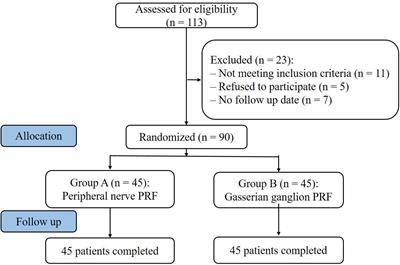you could pulse the nerve for 2 min, then do a 5 second thermal RFA of at least 60 degrees...
as far as SGB for atypical facial pain or trigeminal neuralgia - case reports out there.
We present this report of a young patient with chronic severe atypical facial pain who was successfully controlled with stellate ganglion block under ultrasound guidance. The patient had a history of severe disabling, unilateral, facial neuropathic pain with minimal response to analgesic...

www.ncbi.nlm.nih.gov
A 29-year-old woman with symptoms suggestive of trigeminal neuralgia is presented. Because of her age, an intracranial tumor was suspected, but images of a brain computerized tomography scan revealed nothing in particular. A magnetic resonance imaging was scheduled 2 weeks later. However, as the...

www.ncbi.nlm.nih.gov
thoracic epidurals = SGB. the assumption is that SGB work for facial PHN.
High thoracic epidural block was as effective as stellate ganglion block in relieving moderate-to-severe AHP involving the trigeminal and cervical regions.

www.ncbi.nlm.nih.gov
interesting study on early use of SGB for facial acute PHN:
Early stellate ganglion blockade, in combination with an antiviral agent, is a very effective treatment modality; it dramatically decreases the intensity of acute pain and shortens its duration and reduces the incidence of postherpetic neuralgia.

www.ncbi.nlm.nih.gov
Pulsing of SGB....
<span><b>Objective:</b> Postherpetic neuralgia (PHN) is the most common complication of herpes zoster, manifesting as a persistent, spontaneous, knife-like pain or paroxysmal burning that seriously affects a patient's quality of life. An effective treatment of PHN is lacking. This retrospective...

www.ncbi.nlm.nih.gov



